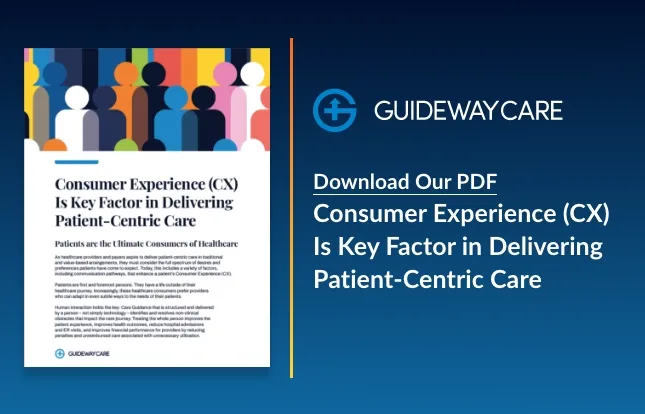What Should Post Acute Care Providers Expect From BPCI Advanced: Top Insights and Preparations

What should post-acute care providers expect from BPCI Advanced? They can expect a shift towards bundled payments, increased emphasis on care coordination, and a focus on meeting quality benchmarks. Providers must manage financial risks and improve care delivery to succeed under this model.
Key Takeaways
- BPCI Advanced aims to improve care coordination and reduce costs by consolidating related healthcare expenses into a single payment for care episodes, enhancing accountability among providers.
- Effective participation in BPCI Advanced requires post-acute care providers to focus on care redesign, data collection, staff training, and technology investments to manage financial risks and improve patient outcomes.
- Addressing social determinants of health is crucial for healthcare providers under BPCI Advanced, as it helps optimize patient care and promotes equity by ensuring patients receive the necessary support based on their social and economic circumstances.
Understanding BPCI Advanced
The BPCI Advanced is an innovative program that fosters improved coordination of care and diminishes healthcare expenses. It has garnered widespread participation, with approximately 1,300 entities participating in this voluntary model. By bundling payments for a specified episode of care into one comprehensive payment, the BPCI Advanced encourages more streamlined delivery of health services and better patient outcomes.
Central to the goals of BPCI Advanced is enhancing quality while simultaneously reducing costs by promoting effective coordination among healthcare providers. This approach incentivizes providers to administer care efficiently and uphold standards for high-quality service delivery. As part of the Quality Payment Program’s advanced alternative payment models, BPCI Advanced establishes clear performance benchmarks that hold participants accountable for cost savings and quality improvements.
Goals and Objectives
The BPCI Advanced program is designed to enhance healthcare quality while reducing unnecessary expenditures by refining care delivery and ensuring patients receive appropriate post-acute treatment promptly. The model emphasizes care coordination and financial responsibility, aiming for superior patient outcomes by optimizing the continuum of care after hospitalization.
Effectively managing post-acute care settings is crucial for achieving these goals, requiring enhanced coordination across patient care facets and adept handling of financial risks. By meticulously applying bundled payment models like BPCI Advanced, hospitals can reduce costs without compromising service standards, all while addressing social determinants that significantly impact health outcomes.
Structure of the Model
The BPCI Advanced program adopts a consolidated payment approach for all services associated with a specific care episode, encompassing both hospital stays and outpatient treatments to provide seamless patient care. Those participating in BPCI Advanced accept the possibility of downside financial risk, which could result in financial losses should the cumulative expenses exceed the set bundled payment.
Within this model, there are two participant categories: convener participants and non-convener participants. The former coordinates service delivery among various providers, while the latter provides medical services directly. This framework is designed to improve coordination across different aspects of patient care with an overarching goal of enhancing health outcomes for patients.
Key Components for Post-Acute Care Providers

Post-acute care providers must understand BPCI Advanced’s core elements to engage successfully. The model aims to enhance coordination among healthcare providers, ensuring comprehensive patient care throughout episodes. It emphasizes efficient communication within care teams to achieve high-quality outcomes.
BPCI Advanced helps reduce costs compared to traditional fee-for-service models. Providers need to plan thoroughly and develop skills in claims analysis for effective management and outcomes improvement.
Clinical Episodes
BPCI Advanced covers a range of clinical episodes that include both inpatient and outpatient services within a set timeframe. The aim is to enhance care standards post-discharge, reduce patient risks, and improve overall quality of life. By focusing on comprehensive care, the model seeks to lower emergency room visits and hospital readmissions, which are crucial for better post-hospital outcomes.
Central to BPCI Advanced is the Transforming Episode Accountability Model (TEAM), which targets high-quality, cost-efficient care for Medicare beneficiaries. Episodes start with either a hospital admission or an outpatient procedure related to surgeries.
The BPCI Advanced framework includes convener participants, who coordinate care, and non-convener participants, who deliver healthcare services directly. This two-participant structure ensures thorough oversight and effective collaboration in managing patient health needs.
Financial Rewards
The BPCI Advanced model involves financial rewards as all clinical episode expenses are consolidated into one bundled payment. Participants can achieve financial gains based on performance relative to target prices, which can lead to additional payments.
Target prices are adjusted by a 3 percent discount rate, incentivizing cost-effective care development. This is crucial given declining commercial insurance reimbursements, which help alleviate financial stress and optimize benefits.
To maximize these economic rewards and remain within budget, strategic monitoring and control over expenditures are essential. Leveraging data analytics is critical for measuring performance indicators and maintaining cost efficiencies in line with BPCI Advanced mandates.
Quality Measures
Within the BPCI Advanced framework, quality measures play a crucial role in promoting efficient service provision and enhancing patient care results. To confirm adherence to superior care standards, providers undergo biannual assessments of both cost and quality indicators. Essential to meeting these criteria is the establishment of systems that track patient outcomes throughout their episodes of care.
Provider performance evaluations cover all expenses incurred during hospital stays as well as those within 90 days post-discharge. This comprehensive review process aims to curtail unnecessary readmissions while elevating overall care quality.
Compliance with these stringent quality measures enables BPCI Advanced participants to make substantial strides in both patient health results and day-to-day operational efficacy. Prioritizing such improvements in quality is vital for the model’s triumph and ensuring the delivery of high-quality medical attention.
Preparing for Participation

Providers aiming to participate in BPCI Advanced must develop specialized expertise, anticipate challenges, and strategize effectively. To meet the model’s standards, they should enhance care coordination, manage financial risks associated with patient care episodes, refine clinical episode management, and adhere to quality measures.
For current applicants wishing to modify their provider Episode Initiators in the BPCI Advanced program, changes are processed through the BPCI Advanced Participant Portal. Convener participants looking to reorganize their Episode Initiators setup require a specific Restructuring Template, while existing members wanting to add new Episode Initiators can use an Addition Template designed for this purpose.
Data Collection and Baseline Assessment
Participants should prioritize comprehensive data collection and initial assessments as foundational steps before engaging with BPCI Advanced. By gathering data over a three-year period, healthcare providers can establish a performance baseline, identify improvement areas, and develop strategic plans for care delivery within the BPCI Advanced model.
This baseline data is crucial for tracking progress, making informed decisions, and successfully navigating financial risks. It aids in enhancing care coordination, meeting quality measures, and ensuring effective participation in the BPCI Advanced program.
Staff Training and Education
Preparing for BPCI Advanced requires a strong focus on staff training and education. Care Guides are trained in motivational interviewing and respecting patient choices, equipping them with essential skills to engage effectively with patients and support their care processes. Successful communication strategies are crucial in involving both patients and their families, ensuring they remain informed and active participants in healthcare decisions.
Training initiatives should prioritize compliance with BPCI Advanced requirements while enhancing the quality of patient care. Investing in staff education fosters a knowledgeable and skilled workforce, which is essential for delivering high-quality care aligned with BPCI Advanced objectives.
Technology and Infrastructure
To effectively engage in BPCI Advanced, post-acute care providers should prioritize implementing advanced technology and strengthening infrastructure. The mySCP Care app is instrumental in tracking patient progress from hospital admission through discharge, aiding in care coordination and quality improvement efforts.
Incorporating telehealth solutions, such as PACS, into skilled nursing facilities enhances patient care and ensures smooth transitions across care levels. By focusing on technological investments and infrastructure improvements, providers can optimize operations, refine data management, and deliver high-quality care aligned with BPCI Advanced standards.
Leveraging Care Coordination

Enhancing care coordination is crucial for the success of BPCI Advanced, ensuring patients receive necessary treatment without incurring unnecessary costs. Clinicians must prioritize patient care, even when expensive treatments are required. Improved care coordination allows health providers to boost patient outcomes, reduce unnecessary utilization, and enhance operational efficiency.
Effective care coordination requires seamless collaboration among healthcare practitioners and facilities, providing uninterrupted services. The success of bundled payments for Care Improvement Advanced models depends on strong care coordination practices, urging providers to invest in this area.
Role of Care Guides
Care Guides are essential in providing seamless transitions and ensuring sustained care for patients as they move through various healthcare environments. They aid in preventing readmissions and elevating patient contentment by guaranteeing that individuals receive the necessary post-discharge care.
In their role, Care Guides tackle obstacles beyond clinical concerns, making sure that patients possess the requisite resources to recover successfully. Take Jerry, a dedicated Care Guide who assisted Mark with organizing transportation for medical appointments, securing medication deliveries, and coordinating meal provisions due to a lack of food following his release from the hospital.
The tailored assistance offered by Care Guides is vital in upholding continuous care and enhancing outcomes for patients.
Communication Strategies
The BPCI Advanced model requires effective communication strategies for successful care coordination. Training should focus on the complexities of bundled payments and managing patient care across various providers. Providing accessible and understandable educational materials is crucial for adherence and understanding.
Healthcare providers involved in BPCI Advanced must implement interoperable systems to facilitate seamless data sharing and coordination among caregivers. Overcoming language barriers and ensuring clear communication are essential for improving care quality, especially for patients from diverse cultural backgrounds.
Managing Post Acute Care Settings
Efficient management of post-acute care settings is crucial for improving patient outcomes and care coordination under BPCI Advanced. Understanding each setting’s unique role and capabilities is essential, including:
- Home Health Care (HHC)
- Skilled Nursing Facilities (SNF)
- Inpatient Rehabilitation Facilities (IRF)
- Long-term Acute Care (LTAC) hospitals
Providers must tailor strategies to leverage these settings’ strengths, enhancing care quality and meeting BPCI Advanced goals. By optimizing treatment timing, unnecessary readmissions are reduced, improving overall health outcomes.
Home Health Care (HHC)
Home health care offers treatment in familiar settings, boosting patient satisfaction and reducing costs. Averaging around $2,500, it is often more affordable than facility-based care. Essential questions like “Why not home?” help evaluate home care benefits. Hospitals also connect patients with community support, addressing social determinants and enhancing the impact of home health care.
Skilled Nursing Facilities (SNF)
SNFs provide advanced nursing and rehab services, surpassing traditional nursing homes. They are vital for recovery and smooth transitions from acute care hospitals, utilizing specialized resources to minimize readmissions and enhance recovery.
Inpatient Rehabilitation Facilities (IRF)
IRFs focus on intensive therapy for significant recovery goals. They are crucial for post-surgery or injury rehab, restoring independence and quality of life. IRFs in BPCI Advanced enable comprehensive rehabilitation, ensuring optimal patient recovery.
Long-term Acute Care (LTAC)
LTAC hospitals cater to severe health issues requiring extended care. They provide sustained medical attention, which is crucial for complex needs. Proper LTAC management enhances recovery and reduces extended care costs, playing a vital role in BPCI Advanced for chronic conditions.
Addressing Social Determinants of Health (SDoH)

Improving patient outcomes and achieving health equity necessitates a focus on social determinants of health (SDoH). The TEAM model incorporates a social risk adjustment to address the financial needs of underserved beneficiaries, easing fiscal pressure on hospitals serving these communities and promoting health equity.
By proactively addressing SDoH, healthcare providers can deliver equitable care across all demographics, ensuring adequate support regardless of socioeconomic status. This comprehensive approach is vital for high-quality care and meeting BPCI Advanced goals.
Identifying Non-Clinical Barriers
Identifying non-clinical barriers is essential for comprehensive care in the BPCI Advanced framework. Transportation challenges can hinder access to healthcare, highlighting the need for telemedicine as an alternative.
Solutions and Interventions
Effective strategies addressing SDoH are crucial for improving patient outcomes and achieving health equity. Participating in population health management requires comprehensive data collection from various sources to enhance healthcare services and outcomes.
Summary
In summary, the BPCI Advanced model offers significant opportunities for post-acute care providers to improve patient outcomes through enhanced care coordination and effective financial risk management. Success in BPCI Advanced requires thorough preparation, an understanding of its goals, and strategic care coordination.
Delivering high-quality care under this model involves addressing social determinants of health and managing various post-acute care settings efficiently. Guideway Care offers essential support to providers in meeting performance benchmarks and optimizing operations.
By applying the strategies outlined in this guide, post-acute service providers can navigate the complexities of BPCI, ensuring exceptional patient care and achieving superior results.
Frequently Asked Questions
What is the primary goal of BPCI Advanced?
The primary goal of BPCI Advanced is to reduce costs while enhancing the quality of care and coordination among healthcare providers. This initiative aims to foster a more efficient healthcare system.
What are the key components of BPCI Advanced for post-acute care providers?
The key components of BPCI Advanced for post-acute care providers are clinical episodes, financial risks and rewards, and quality measures. Emphasizing effective care coordination is vital for improving patient outcomes and minimizing unnecessary costs.
Contact Us Today To Learn How We Can Help
"*" indicates required fields




